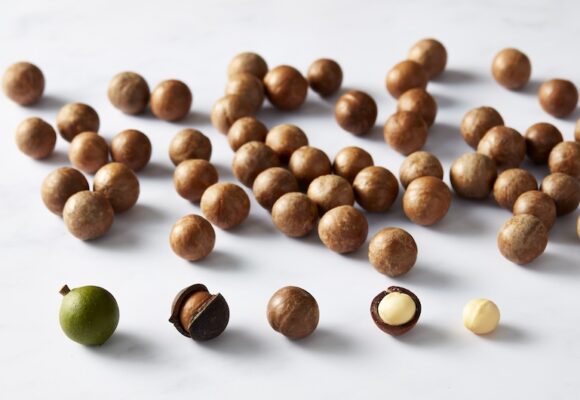Flavour is one of the most powerful tools available to food innovators. In today’s fast-moving global market, where new product launches are prolific and consumer tastes evolve rapidly, flavour remains a critical way to capture attention and drive preference. Whether it’s a nostalgic comfort or a bold new profile, a compelling flavour experience can boost a product’s visibility, fuel word-of-mouth and strengthen brand differentiation.

While traditional flavour profiles still hold strong appeal, consumer curiosity for something new is increasingly influencing buying behaviour. In the United States, nearly half of snackers (48%) say they’re snacking more often simply because they enjoy trying new flavours. In China, 41% of potato snack consumers actively seek out innovative flavour experiences¹.
This is not limited to savoury formats: across food and beverage categories, taste is the number one attribute influencing product choice². This is especially true for viral products, where flavour originality or unexpected pairings often drive attention and engagement.

For food developers working with or considering macadamias, this presents a rich opportunity. Not only do macadamias offer a premium positioning and a distinct flavour of their own, they also pair well with a wide range of flavour profiles: sweet, savoury, spicy, or umami. Their versatility makes them an ideal ingredient for tapping into the latest flavour obsessions.
Here we explore some of the key flavour trends shaping innovation recently across western and Asian markets.
Sweet heat gains sophistication
From the global rise of sriracha to the popularity of sweet chilli, consumers have been conditioned to embrace spice. But the trend has matured and it’s no longer just about intensity. Today’s consumers are seeking layered, multidimensional taste experiences, particularly in snacks, where bold combinations drive innovation.
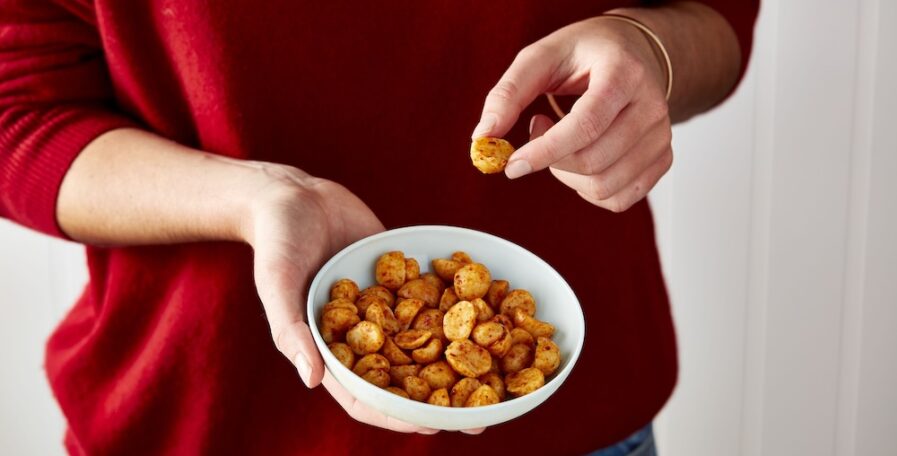
Dubbed “swicy” on social media, the fusion of sweet and spicy flavours has spread across categories. Originally seen in smoked meats and pizza, it’s now firmly established in snacks and confectionery. According to Mintel, this trend is inviting consumers to challenge their palate and be open-minded towards unexpected combinations3.
Regional variations are also emerging, with “sweet and smoky” performing well in western markets and “spicy and sour” gaining traction in India and parts of Asia.¹
Notable examples:
Japan: Nissin Cisco’s Choco Flakes Red Chilli snack marries spicy heat with chocolate-coated cornflakes.
Canada/USA: Hardbite’s Sweet Ghost Pepper chips tap into the popular ghost pepper trend for extreme heat-seekers, but with a sweet twist to attract a broader snack audience; Savoursmiths launched Bubbly Wine and Serrano Pepper potato chips – a pairing that signals how flavour innovation can blend indulgence and adventure; Sahale Snacks’ Spicy Sweet Gochujang Almonds blend fermented Korean chilli paste with sweetness and crunch.
China: Skittles x Zhou Hei Ya Sweet and Spicy Flavoured Chewy Candies combine fruity sweetness with a chilli kick, positioned as a ‘joyful escape’ snack.

Where macadamias fit in: With their smooth, buttery flavour, macadamias pair naturally with umami-rich heat, sticky-sweet coatings and fermented notes, offering real potential in premium swicy-style snack development.
Texture emerges as a taste driver
Although texture isn’t technically a flavour, it has become a critical dimension of how people judge an eating experience, influencing both the sensory feel and the emotional satisfaction it delivers. Creaminess, chewiness, crispness or light aeration now play a major role in product appeal, and for younger consumers in particular, varied textures are not just enjoyed but sought out.
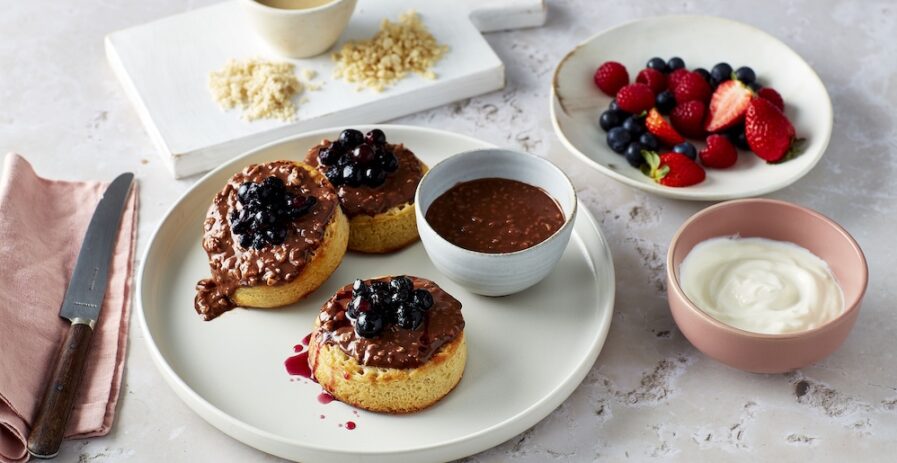
The texture focus is strong in China, where 34% of consumers seek out chewy snacks and 30% prefer crispy ones. Texture-related claims are now common on-pack, with language such as “melt-in-the-mouth,” “soft and chewy,” and “light and crunchy” used to highlight sensory appeal.4
Mintel reports that 85% of German snack bar consumers are interested in bars with varied textures,8 while 27% of Gen Z and 30% of Millennial salty snack consumers in the USA are specifically interested in snacks that combine textures.² Now considered one of the top three requirements for a product to go viral, texture is driving experimentation in formats that deliver pleasure, novelty and stress relief.
Notable examples:
India: My Fitness Chocolate Peanut Butter with Almond Crunch reinvents a classic spread by blending rich chocolate flavour with the crisp texture of roasted almonds for a more indulgent, multi-layered experience.
UK: Real Handful Air Nuts are peanuts aerated via a process that makes them 60% lighter than regular nuts while retaining protein and fibre.
UK / Australia: Skittles have been reimagined as ‘Squishy Cloudz’ with a texture described as ‘squishy, airy and bouncy’.
Japan: Texture is being used to combat stress and boredom particularly among snack brands such as Kameda Seika with its Baritto Potato Rice Potato Cracker designed for extra hardness for stress-relieving crunch. Meanwhile Tohato’s Amijaga Gokuatsu Salt Flavour snack is thick, ridged and crunchy – ideal for ASMR-style enjoyment.5
South Korea: Café chain Mirukku Coffee’s mochi cookies feature unique flavours including Yellow Cheese Macadamia, with a sticky glutinous rice centre delivering the satisfying chew that consumers can’t get enough of.
China: Wall’s Cornetto Chao Ji Bang 7-Layer Chocolate Flavoured Ice Cream features seven textures: a crunchy shell, cookie and nut pieces, runny chocolate sauce, a crispy layer and chunky chocolate balls.

Where macadamias fit in: Naturally creamy with a satisfying crunch, macadamias offer a distinctive texture well suited to emotionally engaging, multi-layered eating experiences.
Botanical buzz
Health and wellness remain strong flavour drivers, with launches focusing on ingredients that deliver both function and sensory appeal. Botanical flavours in particular are thriving, thanks to their association with calm, sleep, beauty and digestion.6
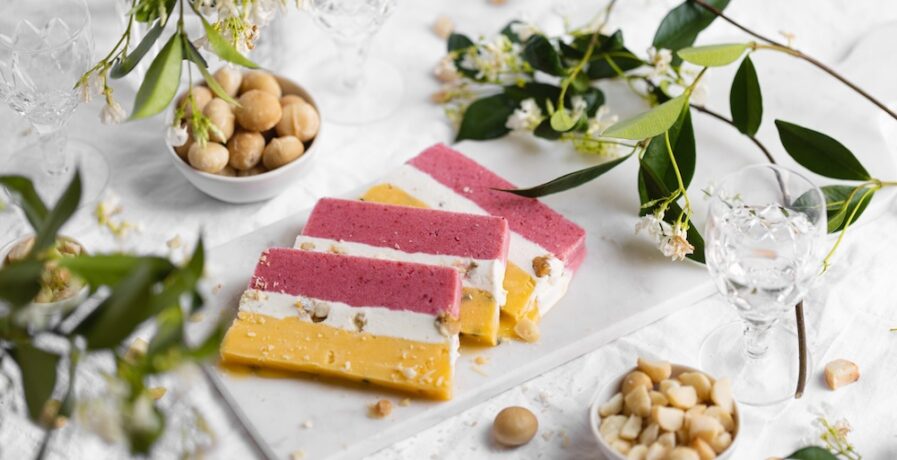
Botanicals encompass flowers, fruits, herbs, spices, seeds and vegetables. Beyond their flavour contribution, they help products cue plant-based, less-processed and mood-boosting credentials.
Floral flavours like hibiscus, chamomile, lavender and rose are appearing in everything from flavoured waters, yoghurts and snack clusters to nuts and tea, often paired with fruits or vanilla. Herbal notes are surging too, with nearly half of consumers globally seeking herbal flavours last year.6
Notable examples:
Japan: Umami Nuts’ gift-worthy range includes several botanical combinations including Salted Cherry Blossom Macadamias, Porcini Macadamias and Lemon & Soy Sauce Almonds.
China: Lipton X Youder White Peach Oolong Flavoured Popcorn fuses fruit and tea flavours in a snackable format.
South Korea and Japan: Glico Haitai Pretz Salad Flavoured Biscuit Sticks offer a rich, savoury flavour containing tomato, cabbage, onion, green paprika and pumpkin.
USA: Sidhha Chocolate is leaning into the mood-management properties of botanicals with Cool Calm Chocolate, containing 10 herbs and three floral essences, and High-Vibe Chocolate featuring five rose flower essences.

Where macadamias fit in: With their natural flavour and health halo, macadamias complement botanical formulations and appeal strongly to wellness-oriented consumers.
Bakery without borders
Bakery and dessert-inspired flavours are gaining momentum worldwide, expanding well beyond their traditional categories to spark innovation in nut butters, beverages and snacks. Their ties to indulgence, nostalgia and celebration make them especially compelling, prompting brands to experiment with inventive cross-category and hybrid launches.
Mintel points to bakery flavours as a way for nut butter brands to unlock indulgence in the category. With 30% of consumers expressing interest in flavoured nut spreads, there’s substantial scope to play in this space and potential to extend usage to other occasions, such as ice cream toppings or indulgent snacking.7
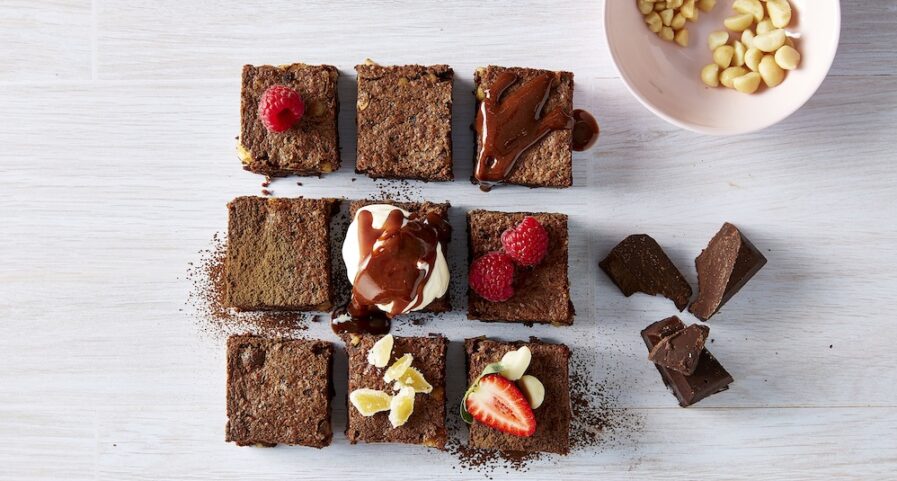
Chinese consumer demand for bakery-inspired ice cream flavours appears to be soaring, however the potential remains unfulfilled, with 54% of China’s ice cream consumers interested in ice cream flavours inspired by cakes or cookies, yet only 3.6% of new product launches in the category in China last year featured these flavours.9
Snack bars are also adopting bakery profiles, replacing traditional “better-for-you” flavours like fruit, honey and yoghurt with indulgent cues such as banana bread, chocolate biscuit and cheesecake¹⁰.
Notable examples:
USA: 321Glo Protein + Nut Butter combines the protein of nuts with indulgent bakery-inspired flavours including Birthday Cake and Cinnamon Cookie; Simple Truth Organic Banana Bread Flavour Baked Energy Bars draw on a classic bakery flavour to cue comfort and indulgence; Jenni’s Ice Cream leans into both the bakery and botanicals trends with its Bay Leaf Cheesecake Ice Cream.
Germany / Bulgaria: Corny Big launched a s’mores-inspired Chocolate Biscuit & Marshmallow muesli bar.
UK: Ice Cream Union’s Tiramisu Ice Cream blends mascarpone ice cream with mocha ripple and freshly baked coffee sponge bites.
China: Häagen-Dazs x Pierre Hermé Vanilla & Blueberry Macaron Crispy Ice Cream Stick channels French patisserie to cut through in a crowded market.

Where macadamias fit in: As a popular bakery ingredient, macadamias are well placed to help brands keen to leverage bakery-inspo in other categories. Adding a buttery richness and satisfying crunch to a host of bakery flavours, they have the potential to add an element of delight and surprise in cross-category flavour mash-ups.
Want more product inspiration?
Australian Macadamias recently launched a suite of Application Solutions Guides – fully tested macadamia product concepts for commercial food innovation. Spanning bakery, dips, nut pastes, snacking and praline fillings, they offer fully validated formulations that shorten the path from concept to commercialisation.
Head here to access the formulations. For Australian bulk macadamia suppliers, visit the Supplier Directory.
